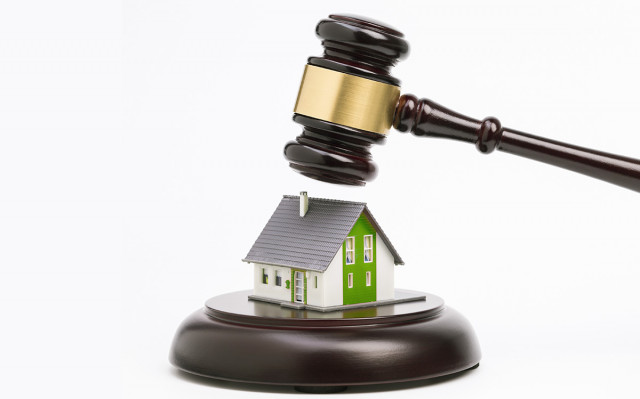Bankruptcy is represented by a specific process, the main purpose of which is the repayment of debts held by a citizen or company. The process can be initiated directly by the debtor or creditors. It consists of several stages, and bankruptcy proceedings in bankruptcy are represented by the last stage, which consists in the sale of property belonging to the non-payer. With the help of funds received from the auction, debt repayment is made.
Process concept
Bankruptcy proceedings in bankruptcy are represented by the procedure in which all property owned by the debtor is sold. The process is carried out by the appointed bankruptcy trustee. He deals with inventory, valuation and sale of values.
For the sale of property electronic bidding is used. The main objective of the process is to receive money from the sale of values, after which the funds are transferred to creditors on the basis of the correct sequence. According to statistics, it is this procedure that is most often used when declaring any debtor insolvent.

When is bankruptcy proceedings required?
Bankruptcy proceedings in a bankruptcy case are required in a situation where it is not possible to pay off debts in other ways than by selling property owned by the debtor.
The manager appointed by the court evaluates the financial condition of the citizen or company. Often a reorganization procedure is carried out or an opportunity to restructure debt is offered.
The main stages of bankruptcy
The very first bankruptcy proceeding is surveillance. It is mandatory, and lasts 7 months, although it can be extended to 10 months under certain conditions. After observation, one of the options is selected:
- financial recovery, the purpose of which is the opportunity to improve the financial condition of the debtor and restore solvency, and it lasts no longer than two years;
- external management, the term of which reaches one and a half years, and it is also allowed to extend it to two years, and the procedure assumes that the debtor's assets are managed by an appointed manager who tries to improve the financial condition of the company or citizen so that as a result the debts are repaid without the need to sell property;
- Bankruptcy bankruptcy proceedings are the last and last resort, the purpose of which is to sell the debtor's values in order to pay off the debt.
At any stage of bankruptcy, an amicable agreement may be concluded with creditors, on the basis of which the procedure is terminated, therefore debt restructuring is carried out, allowing the debtor to cope with his debts on his own.
If immediately after the observation it is established that the financial condition of a citizen or a company is too poor, therefore it is impossible to restore solvency, then bankruptcy proceedings immediately begin. For this, a register of creditors is compiled, the existing property is described, and then it is sold.

The nuances of the procedure
Bankruptcy proceedings are considered an unpleasant process for each debtor. The bankruptcy procedure used at the last stage of recognition of the debtor insolvent has many features:
- the status of the debtor changes, since immediately after the sale of his property at auction, he is declared bankrupt;
- all information about the poor financial condition of the company is entered into the Unified State Register of Legal Entities, and an individual who is a debtor will have to notify banks within 5 years, where it plans to get a loan that it was declared bankrupt;
- the work of the accountant and the head of the company is completely terminated if the enterprise is the debtor;
- a register of creditors is being drawn up, the requirements of which will be satisfied upon receipt of funds from the sale of property;
- interest or interest on loans is terminated;
- it is not allowed to apply any fines or penalties to bankruptcy, as well as other types of sanctions;
- different executive documents regarding the debtor are not executed;
- it is prohibited for the non-payer to carry out any actions related to the sale or concealment of property;
- an arbitration manager is appointed to evaluate and sell the values.
A citizen or a company ceases to fully dispose of their property. Often, transactions committed before bankruptcy are disputed altogether.

How is the process introduced?
Bankruptcy proceedings in the event of the bankruptcy of a legal entity or citizen are introduced only after the stage of observation or after rehabilitation, which did not bring the desired result.
The initiators may be lenders or the direct deadbeat. Often, the process begins with various government agencies. Based on the Federal Law No. 127, bankruptcy proceedings are introduced only by a court decision. Based on this document, the following actions are performed:
- the non-payer is declared bankrupt;
- the period during which the procedure is performed is established;
- a manager is appointed to deal with this process;
- the manager is engaged in the assessment and sale of property, after which he forms a report on the work done.
Bankruptcy proceedings as a bankruptcy procedure lasts for six months. If necessary, this period can be extended, and several times. To do this, the court must form a special ruling.

What actions are performed by the manager?
Bankruptcy proceedings as a bankruptcy procedure are implemented exclusively with the assistance of an arbitration manager. He replaces the liquidation commission. His main actions are aimed at working with the bankruptcy estate. Therefore, when introducing bankruptcy proceedings in bankruptcy proceedings, the following actions are performed by a specialist:
- an inventory of property is being carried out;
- All available assets of the company or citizen are evaluated by an experienced appraiser;
- property is being sought, for which employees of various state bodies are involved;
- asset recovery is carried out, for which a claim or court order can be used;
- the transactions completed during the last year are terminated if the property of the debtor was transferred to third parties;
- collection of receivables is compulsory;
- property preservation is ensured, for which the arbitration manager usually concludes a contract with a pre-selected security organization.
The manager can perform other actions if necessary. According to the Federal Law "On Bankruptcy", bankruptcy proceedings involve the sale of all property belonging to the debtor, although there are some exceptions. These include personal belongings and the only housing of a citizen.

Nuances of bidding
Bankruptcy procedures: supervision, external management, bankruptcy proceedings and rehabilitation are stages, each of which has its own purpose. The last stage is the sale of property. The process can be performed in two ways:
- the sale of values directly if this process is authorized by the meeting of creditors;
- conducting public trading, for which a contract is concluded with the selected commodity exchange.
The most commonly held electronic property sales are property sales.Property for sale on the basis of information received from the appraiser. If there is no demand, then the price is reduced, but such a decrease is certainly consistent with the meeting of creditors.
According to the Law on Bankruptcy, bankruptcy proceedings are aimed at obtaining the maximum amount of funds from the debtor allocated for debt repayment. But at the same time, only such property is selected that is not required in the daily life of a person.

Debt repayment rules
The procedure for debt repayment depends on the time of its appearance. Out of turn after bankruptcy proceedings in the event of the bankruptcy of a legal entity or citizen, obligations related to death or health of the people are repaid. Next, the queue is taken into account:
- legal costs, and additionally here includes the remuneration of the manager;
- salary and other payments to employees working during the bankruptcy process;
- payment for the services of appraisers, auditors or other involved specialists;
- operational payments;
- payment of funds to other creditors.
Bankruptcy proceedings during the bankruptcy of the developer suggests that the main creditors are citizens who have invested in the purchase of future apartments. The property of the company is sold to other organizations planning to continue construction. In this case, citizens do not get their money back, but continue to wait for the completion of the house.
Completion of the procedure
Bankruptcy proceedings are considered an unpleasant event for each debtor. The bankruptcy procedure applied to the debtor ends in two ways:
- if the amount of funds received from the sale of property is sufficient to pay off debts, then the claims of all creditors are satisfied, and the remaining money is provided to the debtor;
- if even after the sale of all values outstanding debts remain, they are written off.
After these processes, a citizen or company is declared bankrupt. For this, an appropriate decision is made by the arbitration court.

Process consequences
The consequences of bankruptcy depend on whether the debtor is a company or a citizen. The main unpleasant moments of the procedure include:
- property belonging to the non-payer is sold;
- within 5 years, he will not be able to occupy leadership positions in any companies;
- Citizens recognized as bankrupt, when applying for a loan at any bank, must inform, within 5 years, that the insolvency procedure has been applied to them.
The most unpleasant moment is the sale of personal property. Arbitration managers often dispute transactions completed within one year, in which values were transferred to third parties. Therefore, using different methods of hiding property will not work.

Conclusion
Bankruptcy proceedings are the final stage of bankruptcy for each debtor represented by a company or private individual. The procedure involves the sale of property held by the deadbeat.
For the sale of values held electronic bidding. All actions related to price changes are consistent with the meeting of creditors. Using the funds received from the sale of valuables, it is possible to pay off existing debts on the basis of special priority.
